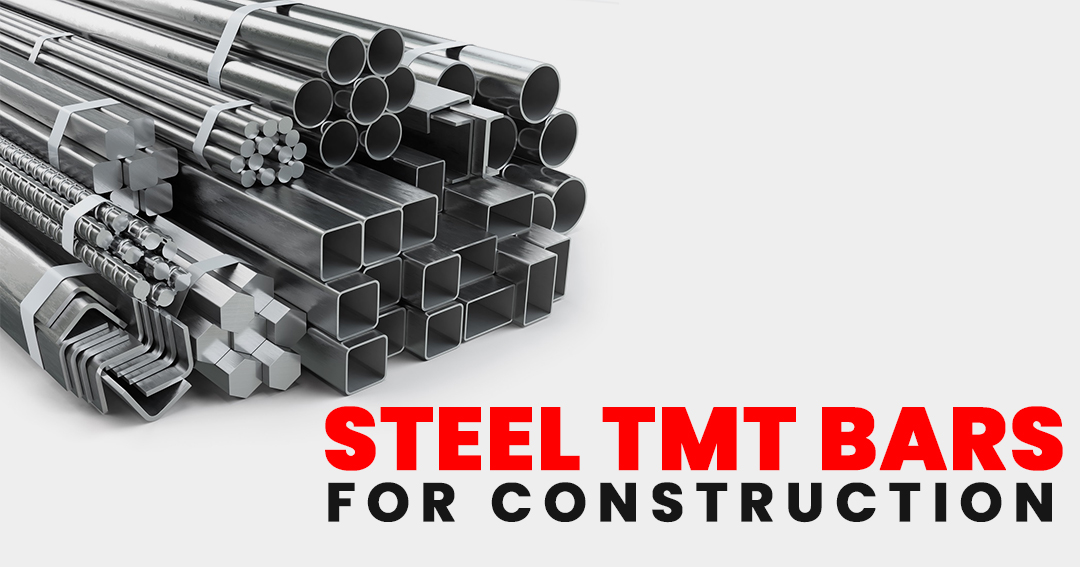Essential Checks for Selecting the Right TMT Bars

- By : admin
- 0 Comments
The foundation of any robust construction project lies in its skeletal structure. Steel TMT (Thermo Mechanically Treated) bars play a vital role in this framework, providing the strength and resilience needed for buildings to withstand various challenges. According to a 2023 report, over 85% of construction projects in India utilize TMT bars due to their superior properties compared to traditional steel bars. However, with the growing popularity of TMT bars, the risk of encountering counterfeit or substandard materials also increases. Selecting the right Steel TMT bars for construction is crucial for ensuring the safety and longevity of your construction project. Here, we explore essential checks to guide you in making informed decisions when choosing TMT bars.
Understanding TMT Bar Grades:
The first step involves understanding the different grades of TMT bars available. These grades are denoted by numbers, such as Fe 415, Fe 500, and Fe 550. The number represents the minimum yield strength of the TMT bar in megapascals (MPa). Fe 415 bars are suitable for low-rise buildings, while Fe 500 and Fe 550 bars offer higher strength and are preferred for multi-story structures, bridges, and other demanding applications.
Manufacturer Reputation and Certifications:
Choosing a reputable TMT bar manufacturer is paramount. Look for companies with a proven track record of quality and adherence to industry standards. Reputable manufacturers typically have certifications from recognized bodies like the Bureau of Indian Standards (BIS) or international quality control organizations. These certifications ensure that the Steel TMT bars for construction meet the specified grade, chemical composition, and mechanical properties.
Verification of Test Certificates:
Every batch of TMT bars should be accompanied by a test certificate issued by a third-party laboratory. This certificate verifies the chemical composition, mechanical properties (yield strength, ultimate tensile strength, elongation), and bendability of the TMT bars. Always request these test certificates from the supplier and ensure they comply with the relevant Indian Standard specifications (IS: 1788) for TMT bars.
Physical Inspection of the TMT Bars:
A visual inspection can reveal some key characteristics of the TMT bars. Genuine TMT bars should have a distinct herringbone pattern on their surface, created during the thermo-mechanical treatment process. This pattern enhances the bonding between the TMT bars and concrete, leading to improved structural integrity. The bars should be free from cracks, rust, or deformations, indicating proper storage and handling practices.
Ensuring the Correct Diameter and Weight:
TMT bars are available in various diameters, such as 8mm, 10mm, 12mm, and so on. Double-check the diameter of the bars you receive against what you ordered. Similarly, verify the weight of the TMT bars per meter length. Reputable manufacturers maintain consistent weight per meter for each diameter, ensuring you receive the specified quantity of steel for your project.
NDT (Non-Destructive Testing):
For critical applications, consider employing Non-Destructive Testing (NDT) techniques on the TMT bars. These techniques, such as ultrasonic testing or radiographic testing, allow for the inspection of the bars for internal cracks, voids, or other defects without damaging the material. NDT ensures the structural integrity of the TMT bars and provides peace of mind for projects with high safety requirements.
Corrosion Resistance:
Corrosion is a common threat to steel reinforcement in concrete structures, particularly in coastal areas or environments with high humidity and chemical exposure. Opting for Steel TMT bars for construction with enhanced corrosion resistance properties, such as corrosion-resistant coatings or alloy compositions, helps prolong the service life of the structure and reduces maintenance costs.
Price vs. Value:
While cost is a factor, prioritizing the lowest price can lead to compromising on quality. Focus on finding a balance between a competitive price and the assurance of genuine TMT bars. Reputable manufacturers offer transparent pricing and can provide justifications for their pricing structure based on the quality and certifications of their TMT bars.
Beware of Counterfeits:
The construction industry is susceptible to counterfeit materials. Be wary of Steel TMT bars for construction with an excessively smooth surface, inconsistent weight, or missing manufacturer markings. Opting for unknown brands or suspiciously low prices can be red flags. Stick with established manufacturers with a proven track record of quality.
Selecting the right Steel TMT bars for construction is an investment in the safety and longevity of your construction project. By following these essential checks, you can ensure you’re getting genuine high-quality TMT bars that meet the required standards. Don’t hesitate to ask questions, request certifications, and conduct thorough inspections before finalizing your purchase. Remember, building with confidence starts with selecting the right building materials. So, make informed decisions and choose TMT bars that inspire trust and contribute to a strong and secure future for your construction project.
